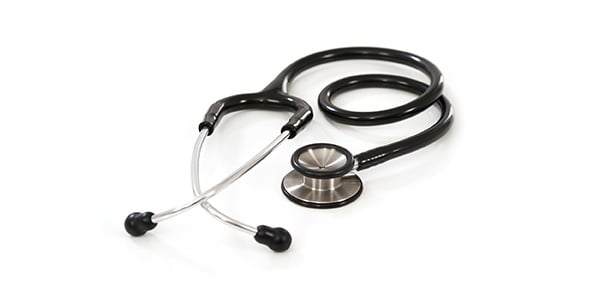What is the most common accident in all settings?
Which is a sign of physical abuse?
Mr. Lau has bipolar disorder. This means he:
Adults of all ages often fear:
Post-operatively following a hip surgery, your patient's...
When transferring a client to bed, a chair, or the toilet:
AIDS stands for:
All of the following refers to nutrition EXCEPT:
A "pathogen" :
Pre-operatively, your patient should be:
In Trendelenburg Position:
You find your unsteady patient on the ground, shaken and in pain. The...
White flakes on the scalp is known as:
You need to do laundry, dust surfaces, and mop the floor. In which...
Your client in the home you work in asks for your home phone number....
A nonsocomial infection is:
Bronchitis is:
Table sugar, fruit and fruit juices are examples of:
A symptom of mastitis is:
A person who is able to transfer a pathogen to others without getting...
Which prevents permanent plantar flexion?
Citrus fruits, tomatoes, potatoes and cabbage are excellent sources...
Which of the following is NOT one of the 8 rights of assisting with...
Rigor Mortis refers to:
Producing and secreting milk from the breasts is called:
Your patient requires a bed linen change. He is a bed-ridden client...
Which of the following is not a factor affecting eating and nutrition?
Your patient is "ambulating." This means:
Mr. Lang is alert and oriented, but has not slept well for weeks, and...
All of the following are good sources of calcium EXCEPT:
All of the following are steps you should do when using a fire...
Aspiration is a major complication of:
Down Syndrome occurs:
Mr. Baldovino has to touch the doorknob three times before actually...
The back-lying position is called:
"Trochanter rolls" are used for:
Mr. Long must do coughing and deep breathing exercises after surgery...
The environment where the pathogen lives before it infects a person...
Down Syndrome and Spina Bifida are examples of:
Which of the following is the first sign of a pressure ulcer?
Agatha has major depression. You should avoid:
A bacterium that causes diarrhea and colitis is called:
Which is a common reason for tube feedings?
A drawsheet is:
Calcium, Phosphorus, Zinc, and Iron are examples of:
Clear, watery drainage from a wound. This drainage is called:
How can spores be destroyed?
Which of the following is a HINGE joint?
The first phase in the healing process of wounds is:
Mr. Heron has an abdominal binder. The binder is used to:
Which of the following is used to hyperventilate the lungs?
All of the following are types of Anesthesia except:
The device used to measure oxygen concentration in arterial blood flow...
Exploring the unconscious conflicts and underlying reasons for a...
Your patient Mr. Jones, recently got his arm amputated. He states he...
Your client has an abnormally high blood sugar. This is called:
"Biofilm" is:
Cognitive function relates to:
Who is responsible for protecting employees from injuries and...
At 1300 hrs, Your RN supervisor tells you that a urine specimen has to...
You attend a dinner party and have a drink of water from the...
The term to describe "difficulty breathing" is:
The major function for Vitamin K is:
The best position for using a bedpan is:
Mr. Dunn has Alzheimer's Disease. He is heard screaming in the...
"Orthostatic hypotension" refers to:
Urinary Incontinence:
All of the following terms mean "peeing" EXCEPT for:
Your patient joins an exercise group at the long term care center. He...
Mrs. White has bitten off her intravenous line and has fallen several...
Meat, butter, milk and cheeses are examples of:
The heart of a person is contraction. The heart :
All of the following are complications of wounds EXCEPT:
The doctor rushes into your patient's room and inserts an...
Polyuria is:
Urine would be tested for the following things EXCEPT:
Which of the following is NOT a pulse site?
When heat is applied to the skin, the blood vessels will:
Canola oil and olive oil are examples of:
Lice infestation of the scalp is known as:
You are preparing Mrs. Janz for an exam. You should do the following:
Your client has "muscle atrophy". This means:
A "contusion" is:
All of the following are from Erik Ericson's stages of...
Dorsal Recumbent Position is also known as:
The movement of and contraction of muscles of the digestive tract...
A partial-thickness wound caused by the scraping away or rubbing of...
Chest tubes are inserted to remove:
All of the following refer to positions and locations of the body...
Phlebitis is:
The period between exposure to the pathogen and the onset of illness...
Another word for "red blood cells" is:
Your patient appears very sedated after taking two different kinds of...
Suctioning requires:
A blood clot, an air bubble, or a fat clot that travels through the...
Fluid in the pleural space is known as:
Your patient is SOB with chest pain and is able to sit at the edge of...
A collection of blood under the skin and tissues, forms and the area...
The two main respiratory complications that can follow after...
A client has a pneumathorax. This is the collection of:
















